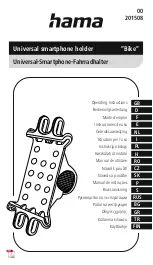
4-7
Investigate
This feature allows selected stations with a special class of service to investigate any call in progress.
If CID information is available for an incoming call, you can see to whom this station user is speaking.
On outgoing calls, you can see who was called. After investigating, you may barge-in on the
conversation, disconnect the call or hang up.
Abandoned Call List
There is a system-wide abandoned call list that stores CID information for calls that rang but were not
answered. The list is accessed using the administrator’s passcode. When reviewing this list, you are
provided options to CLEAR the entry or DIAL the number. You can use the NND key to toggle between
the CID name, number and the date and time the call came in. The abandoned call list will store up to
100 unanswered calls.
CID on SMDR
The Station Message Detail Recording (SMDR) report can be set to include CID name and CID
number for incoming calls. This format expands the printout to 113 characters. Use a wide carriage
printer or an 80 column printer set for condensed print.
Number to Name Translation
The system provides a number-to-name translation table for the system. When a CID number is
received, the table is searched; if a match is found, the system will display the corresponding name.
Number of entries allowed in the table is:
‘S’ & ‘M’ systems: 1000 entries.
‘L’ systems: 2000 entries.
2. Calling Line Identification (CLI) for Outgoing Calls
Outgoing CID
A station user can choose to have an identifying number sent to called parties when a call is made.
This number can be any valid number the user selects in programming options (the DDI number, for
example). One of four numbers can be selected, depending on the outgoing trunk circuit.
Restricting Outgoing CID
Sending of CLI information can be turned off either permanently in MMC programming, or on a one-
time basis using a programmed NOCLIP key at the station.
Call Forwarding
This feature allows the user to redirect (forward) incoming calls. The calls can be redirected
to the attendant, a hunt group, voice mail, external number or another station user. If the
destination station is in Do Not Disturb (DND), the calling party will receive DND/Reorder
tone. Calls cannot be forwarded to a door phone.
All Calls
This type of forwarding is not affected by the condition of the station. All calls are immediately
redirected to the designated destination. The station user forwarding the calls can continue to make
calls as usual. If desired, a destination station may redirect the call back to the forwarding station by
using the transfer feature. If no key is programmed as a Forward All key, the Transfer (or TRSF) key
lights steady when a Forward All condition is set.
















































